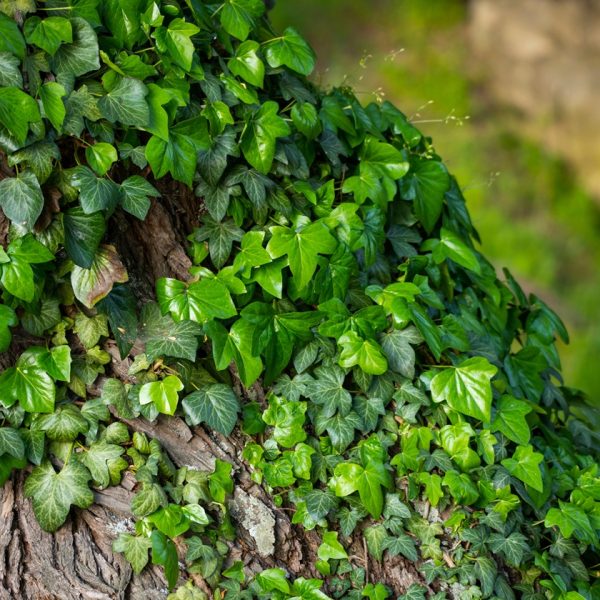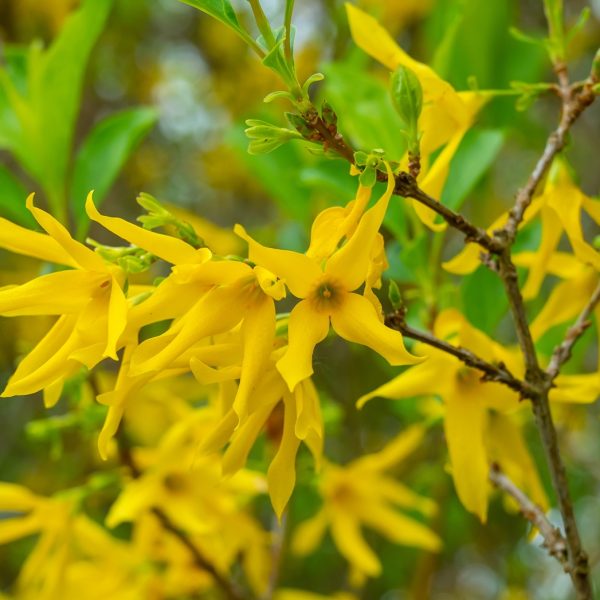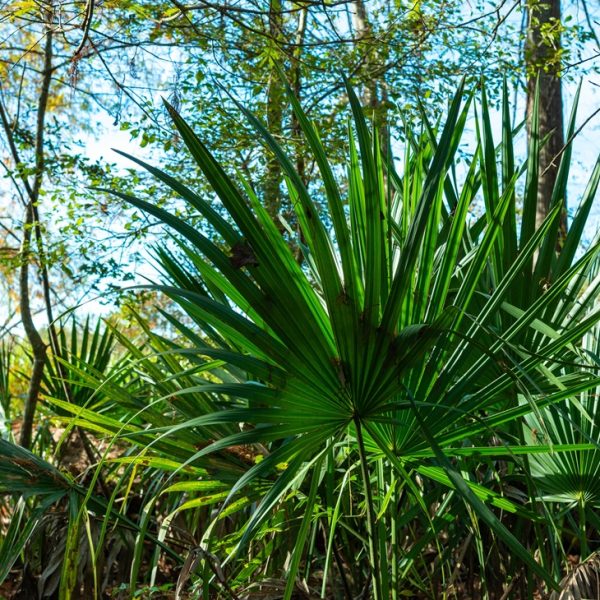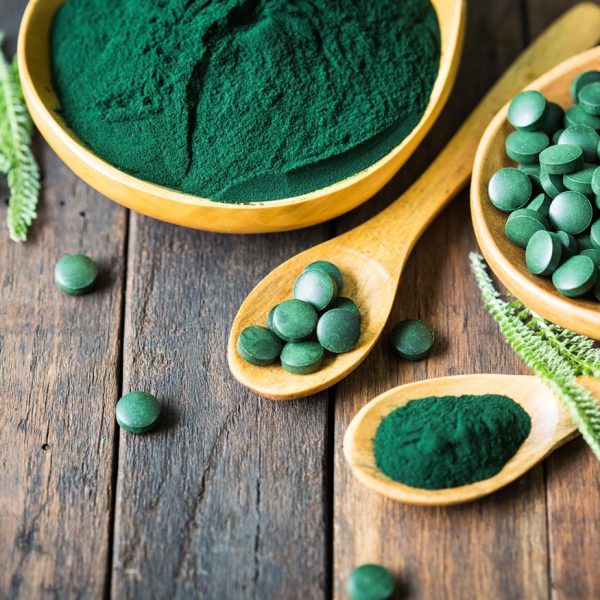
Liquorice is one of the most valued herbal medicines globally, yet its population sizes are shrinking rapidly. This article shares insights on the sustainability of this plant and solutions to protect it.
Liquorice (Glycyrrhiza glabra) is a herbaceous perennial plant of the Leguminosae or Fabaceae family. Liquorice has a long history of use as medicine and food, stretching back thousands of years in parts of Africa, Asia and Europe (5). The scientific name Glycyrrhiza originates from the ancient greek “glyka” meaning sweet and “rhiza” for root. The Glycyrrhiza genus includes 20 species, however only four of these are commonly used. These are G. glabra, G. echinata, G. inflata and G. uralensis. Out of these four, G. glabra is the one most commonly described in medicinal monographs, though some treat all 4 species interchangeably, and all are commonly traded interchangeably as Liquorice root on the market (1-4).
Due to its long history of use as medicine and for its sweetness, there has always been a high demand for liquorice, but due to the rise in popularity of natural remedies, particularly in developed countries and an increasing demand across various industries, wild populations of liquorice are becoming progressively overused.
Uses of liquorice
Medicinally, liquorice is often used in combination with other herbs to treat ailments of the respiratory system such as asthma and coughs, the digestive system, cardiovascular system and diseases of the liver (1,3,5). As such it can be frequently found in many traditional Ayurvedic, Chinese or Western herbal formulations.
Today, the largest sectors in which Liquorice root and its extract are used are the tobacco, food and pharmaceutical industries and a smaller proportion in the cosmetic industry. One of the largest importers is the tobacco industry, which adds liquorice extract to tobacco as a taste additive and to prevent desiccation. Due to its sweetness (50 to 100 times sweeter than sucrose) glycyrrhizin is often used in the food industry as a sweetener (6). Another trade of liquorice is focused on the extraction of glycyrrhizin which is included in medicinal preparations in countries such as China and Japan (2,7).
Where does it grow?
Liquorice grows in steppes, semi-deserts, deserts and can be found growing in the wild in northern Africa, Mediterranean areas of Europe, western and central Asia. It is a pioneer species that copes well with overused or damaged land and it deals well with soils that have a high salt content, a problem that has become a major environmental issue in Central Asia (9). In many cases the plant is also cultivated, for example in France, Italy and Spain, though most of the liquorice that is on the market today is wild harvested (4). Due to its widespread habitat across multiple continents, and its overall large population, the IUCN (The International Union for Conservation of Nature) ranks the threat to liquorice as least concern (10). However, in certain areas of the world, it is increasingly under threat. Due to the ever-increasing global demand for liquorice, climate change, desertification, change in harvest methods, land use or over-harvesting, more and more plant populations around the world are being threatened (9-12).
The plants usually need to grow at least 3-5 years before the root is big enough to be harvested. The long woody roots can grow between 2.5-3 metres in depth. Traditionally the roots are then harvested by hand, which is hard work that involves digging up the root. With this method only the first metre or so of root is harvested, leaving the rest in the mostly undisturbed earth to regrow. More commercial operations involve a tractor ploughing a shallow trench 40-60cm deep in the soil, exposing roots that are then collected by hand. This is more time efficient and less hard work for the harvesters, but has far greater impacts on the local flora and fauna.
Liquorice on the global market

The picture on the right shows liquorice trade in Aleppo. I was struck by the volume of liquorice root in this picture. It was taken over 100 years ago, since then the global liquorice trade has grown massively. I wonder what this would look like today. According to future market insights, the global market of liquorice in 2022 was $848.9 million USD and is expected to grow to $1,418.4 million USD with a 5.3% growth rate by 2032 (8). Its prognosis of this rapid growth is explained with the rising trend of using herbal remedies in Europa and the USA.
However, as the same specific commodity code is being used for Liquorice root and extract, it can be difficult to distil which countries are big players in producing extracts and which are big players in growing and exporting the root (4).
Historical export figures from Turkey may mirror the decline of local populations due to over-harvesting. Turkish export numbers from the last century report yearly figures as high as 20.000t, declining to 1.500t towards the end of the last century. The species was deemed rare in Turkey in the 1990s (13). In Hungary and Bulgaria it is also considered rare or threatened.
Today the leading producers of wild-collected liquorice root on the global market include Afghanistan, Pakistan, Uzbekistan, Turkmenistan, Kazakhstan, Armenia, Azerbaijan, Georgia, and China (4). Part of the problem in figuring out the effects of liquorice harvests is that many picking sites are located in extremely remote areas of the world, sometimes in areas that are politically unstable and unsafe for travelling.
To give some perspective: In 2022 the global herbal supplement market had a value of 98.8 Bn USD. The liquorice trade is therefore 0.85% of the herbal supplement trade. With thousands of medicinal plants available, this shows the prevalence of liquorice root in herbal medicine.
Regulating the liquorice trade

In some countries the harvest of liquorice is now more regulated to protect the local populations and long-term trade. In Kazakhstan for example, where the harvest is being done by ploughing the earth with a tractor and then picking the root by hand, the land has to be tilled and flooded afterwards to restore the liquorice populations. And the land has to be left for six years before the next liquorice harvest, to let the population recover (9). Similarly, a series of guidelines and policies have been introduced in China, where wild liquorice populations have decreased by 60% between 1980 and 2009 (4), to protect local liquorice stands (12). But how well are these regulations working?
Tighter regulations have decreased the overall available liquorice on the market, which leads to an increased conflict between supply and demand and makes illegal harvest practices even more attractive. As is common practice with resource economy, the harvesters of natural resources only get very little of the actual market price. With liquorice, the price has increased tenfold on its journey from harvester to global market (9). In Kazakhstan, most wild liquorice harvesters are from rural villages, typically with low income, that rely solely on the root harvest as a source of stable income. The only way to create more income is to harvest more, leading to highly unsustainable rates (9). Unlicenced harvesters move in swiftly onto liquorice stands without permission and use tractors to turn over deep layers of earth to expose liquorice roots. Sometimes the local vegetation is first burned.
After the harvest, the soil is then left exposed, and any remaining roots are left to dry out, not allowing plants to recover. As a result, the local ecosystems are massively disrupted. Following this, it seems clear that regulations are not alone effective to support people to harvest sustainably, when prices are being dictated by a global market, and harvesters get so little. Challenging living situations are commonly a factor that drives people to unsustainable practices. This is a good example of how ecological sustainability is often closely intertwined with human access to welfare and justice. Fair wages are needed to support people to harvest sustainably. The other core element to sustainability is traceability. Part of the problem with the illegal harvest is that it easily finds its way onto the global market, which also gives little incentive for anyone else to comply with local regulations. International certification schemes are the main tools used today to guarantee a certain quality, sustainability or fair wage.

Standards such as organic and fairtrade are well known today, however they do not address all the problems of sustainability associated with wild harvesting. Indeed standards dealing with this matter are fairly young in the scheme of things. Between 2001 and 2006 the International Standard for Sustainable Wild Collection of Medicinal and Aromatic Plants (ISSC-MAP) was developed in order to ensure sustainability in the wild collection system. It defines guidelines and provides tools to collectors, producers and decision makers for the planning and implementation of a sustainable resource management system based on the Good Agricultural and Collection Practices guidelines. Following this, in 2006 FairWild, a Swiss-government supported certification scheme was started, with the aim of supporting social as well as ecological and economic sustainable use of habitats all over the world.
Getting wild liquorice collections sites and companies certified brought its own challenges as most of the places liquorice comes from are extremely remote and hard to get to, which has made any traceability hard to carry out (14). Some sources of liquorice are in areas of the world where diplomatic relations and trade have been difficult or disrupted over the years, especially Afghanistan, Pakistan, Iran, Iraq, and Syria which have made collaboration difficult (14). On top of this, it is not only producers that have to cooperate, but major suppliers also have to take responsibility and support sustainable practices.
One example of a successful relationship between plant and human community can be found in northern Spain. Here, a group of local farmers collect liquorice root in sustainable ways, assuring the recovery of their local environment. Together with FairWild, Herbes del Moli and with UK company Organic Herb Trading, they are supplying sustainably sourced liquorice to the global market, with full traceability and with full support for the growers. Through FairWild funds, some of the economic value created is guaranteed to flow back into the local community, supporting education projects and necessities as in this case a van for the collectors, shelter from the fierce sun and a clean place to prepare their meals in the field (15).
There are more projects like these around the globe, and currently FairWild is running some trials with liquorice harvest in Afghanistan. It takes a long time to establish these relationships and it requires many players to work together to achieve a sustainable community. But it is worth it if it means that all players involved, including harvesters, ecosystems and plants get to be treated sustainably, fairly and with respect.
References
- European Medicines Agency Ema. Liquiritiae Radix, European Medicines Agency. 2022; Available at: https://www.ema.europa.eu/en/medicines/herbal/liquiritiae-radix (Accessed: April 13, 2023).
- Li JY, Cao HY, Liu P, Cheng GH, Sun MY. Glycyrrhizic acid in the treatment of liver diseases: literature review. Biomed Res Int. 2014;2014:872139. doi:10.1155/2014/872139
- Zhang QH, Huang HZ, Qiu M, et al. Traditional Uses, Pharmacological Effects, and Molecular Mechanisms of Licorice in Potential Therapy of COVID-19. Front Pharmacol. 2021;12:719758. 2021 Nov 26. doi:10.3389/fphar.2021.719758
- Schindler, C., Heral, E., Drinkwater, E., Timoshyna, A., Muir, G., Walter, S., Leaman, D.J. and Schippmann, U. Wild check – Assessing risks and opportunities of trade in wild plant ingredients. Rome, FAO. 2022 https://doi.org/10.4060/cb9267en
- Fiore C, Eisenhut M, Ragazzi E, Zanchin G, Armanini D. A history of the therapeutic use of liquorice in Europe. J Ethnopharmacol. 2005; 99(3):317-324. doi:10.1016/j.jep.2005.04.015
- Saulo A; Sugars and Sweeteners in Food. Food Safety and Technology. 2005;
- Hayashi, H., Sudo, H. Economic importance of licorice Plant. Biotechnology. 26, 101–104 2009.
- Futuremarketinsights.com: https://www.futuremarketinsights.com/reports/licorice-root-market (Accessed April 24, 2023).
- Gemedzhieva, N., Khrokov, A., Heral, E., Timoshyna, A.; Sweet Dreams Assessing Opportunities and Threats in Kazakhstan’s Wild Liquorice Root Trade. Traffic, 2021.
- IUCN red lists https://www.iucnredlist.org/species/203353/2764319#population (Accessed April 24, 2023).
- Esmaeili, H., Karami, A., Hadian, J., Ebrahimi, S., Otto, L.; Genetic structure and variation in Iranian licorice (Glycyrrhiza glabra L.) populations based on morphological, phytochemical and simple sequence repeats markers. Industrial Crops and Products, Volume 145. 2020.
- Han, Y., Pang, X., Zhang, X., Han, R., Liang, Z.; Resource sustainability and challenges: Status and competitiveness of international trade in licorice extracts under the Belt and Road Initiative. Global Ecology and Conservation 34 (2022) e02014. 2022.
- Lange, D.; Europe’s medicinal and aromatic plants: their use, trade and conservation. TRAFFIC international. 1998.
- Brinckmann, J., A.; The long road to sustainable liquorice. 2020.
- FairWild. Meet the Collecters: FairWild Liquorice in Spain. https://www.fairwild.org/news/2019/6/4/meet-the-collectors-fairwild-liquorice-in-spain (Accessed April 28, 2023).
































